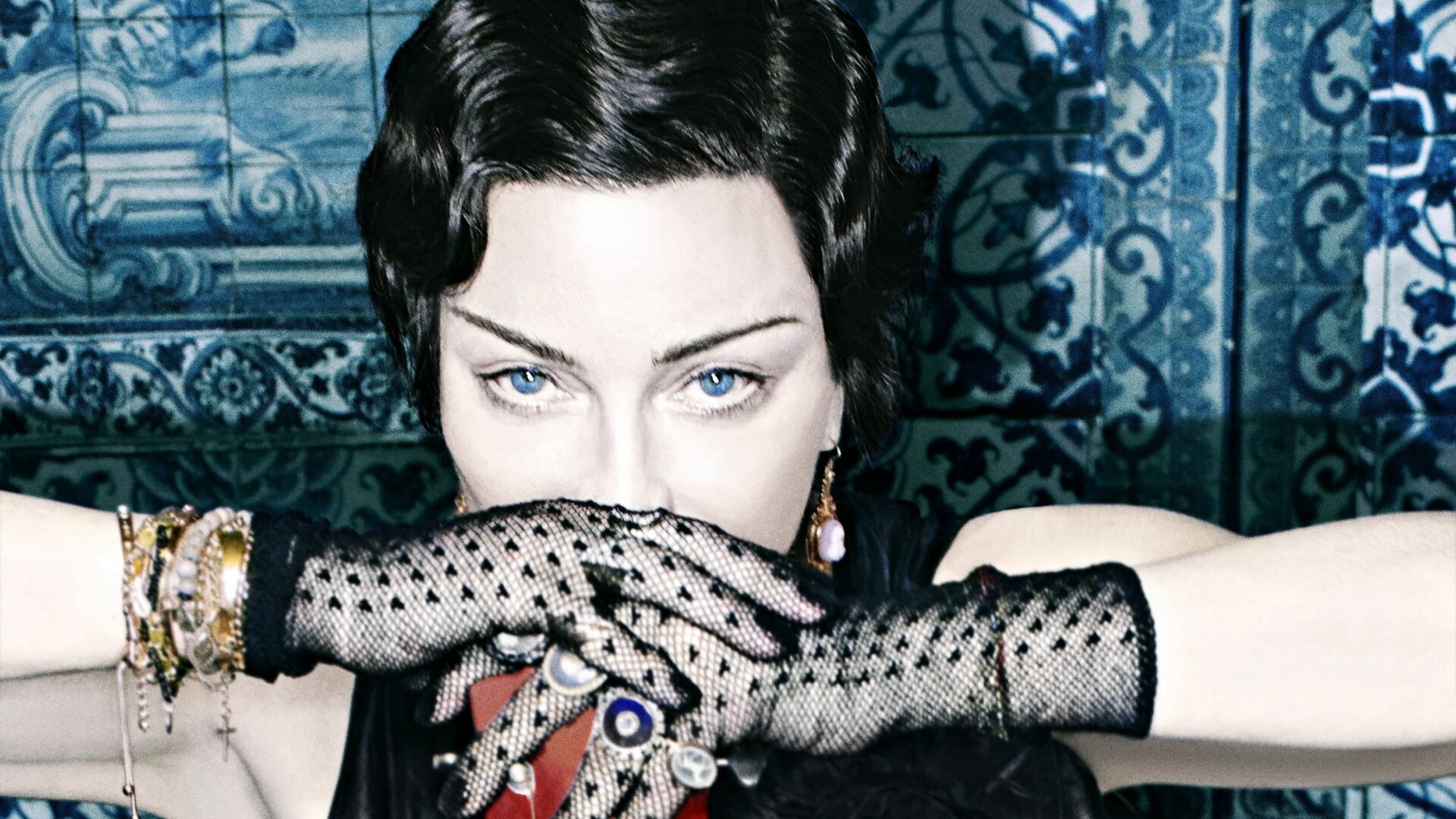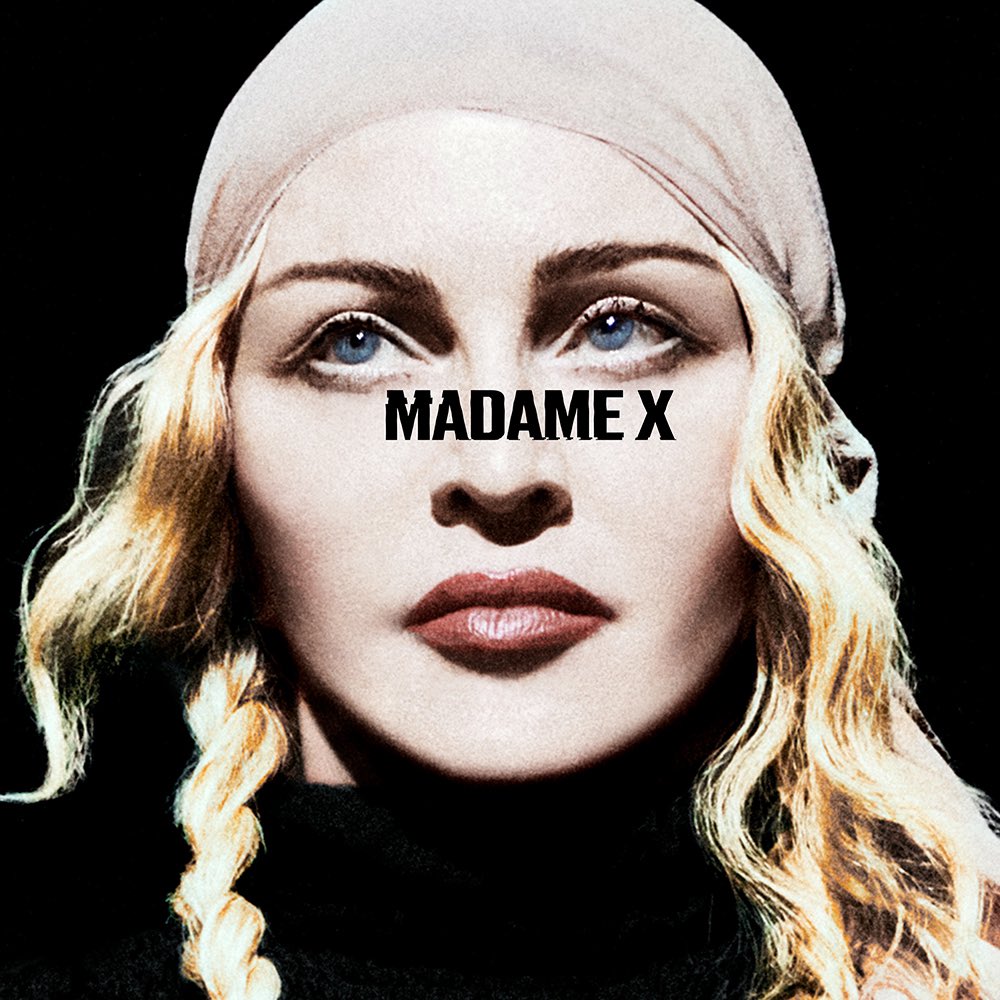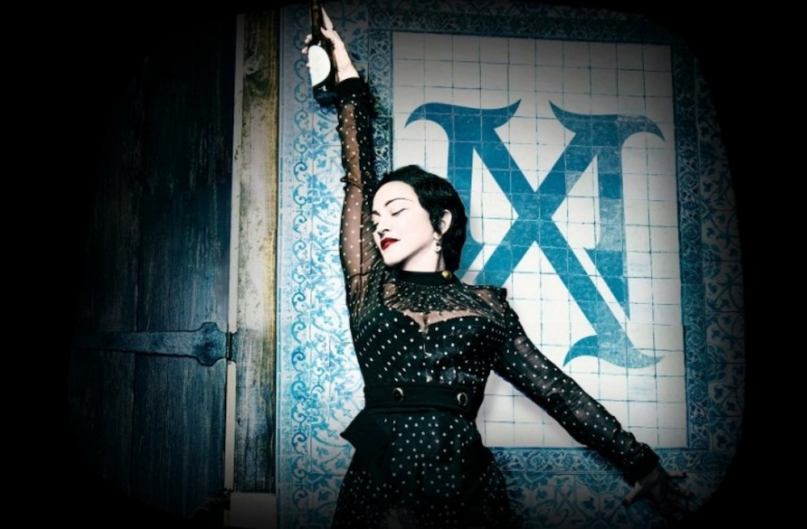‘Why Madonna’s ‘Madame X’ deserves to rank among her great records’
As the Queen of Pop embarks her intimate 'Madame X' tour, Matthew Barton takes a deep-dive into her most recent album.

It’s a pretty good time to be a Madonna fan right now. The pop icon released her 14th studio LP Madame X earlier this summer after a tantalising build-up – and, a couple of months on and with her intimate new tour kicking off in New York this week, I’ve lived with it long enough to proclaim it as one of Madonna’s great records.
Phew – that is a quite joyful thing to say, following on from a wilderness period where Madonna just wasn’t quite hitting the mark.
Whether it was collaborating with artists who made her less ‘trendsetter’ and more ‘trend-follower’, releasing lacklustre lead singles, or generally just not quite hitting the spot, post-Confessions era Madonna somehow hasn’t been quite the same, has she? (Awesome tours notwithstanding).
So how did it all start to go right again? Let’s take a closer look at Madame X.
The inspiration
Madonna works best when she is engaged with the records she is making – in a recent interview with Mojo, Madonna namechecked 1989’s Like a Prayer and 1998’s Ray of Light as examples of albums she just had to make.
Madame X doesn’t quite fit into that category, with Madonna admitting that the album grew out of “boredom” rather than burning desire, but she lightly threw shade on 2012’s MDNA and 2015’s Rebel Heart, describing them as records she made while waiting for money to be raised for a film (“Honestly, the last couple of albums, I’ve made them reluctantly.”)
While Madame X may have had inauspicious beginnings, starting life as a way to kill time following her improbable move to Lisbon to be a “soccer mom” to her son David, it quickly developed into a project quite unlike anything else Madonna had put her name to.
Pushing herself out of her comfort zone, she went to musicians’ houses, parties, and bars in search of music and companionship, and collaborated with local Portuguese musicians on exciting, acoustic music.
Madonna’s disavowal of records-by-industry-committee (“remember…when I was allowed to be a visionary and not have to go to song writing camps,” she railed on Instagram in early 2018) led her back to French producer/writer/musician/whiz Mirwais Ahmadzaï, with whom she collaborated on two of her most innovative and experimental records, 2000’s Music and 2003’s American Life.
This collaboration is key to Madame X‘s sound: two artists at ease in each other’s company but challenging each other to come up with something exciting, different, adventurous. Madonna took the inspiration from Lisbon, and traditional Portuguese music, and brought it to a producer whom she knew would help her fashion it into something completely new. Which brings us to…
The music

All the inspired visuals and promotion in the world can’t hide mediocre music. Madonna is renowned as a master of reinvention (indeed, she recycled this press moniker for her own ends on a 2004 world tour), but you cannot sustain a lasting career in the fickle waters of mainstream pop if the music itself isn’t up to scratch – and Madonna, with her propensity for A-grade pop music, has been the supreme pop artist of her generation.
Madame X succeeds, fundamentally, because the music is good. It’s not packed with endless hits like True Blue or Like a Prayer; rather it’s in the style of 1992’s Erotica or American Life, of-a-piece albums that stand as bold, cohesive statements. This is the first such triumph since 2005’s Confessions on a Dance Floor.
It’s a zany fusion of Latin pop, reggaeton, R&B, disco, and European flavours, but where albums like 2008’s Hard Candy and Rebel Heart often shoe-horned “urban music” into their sound worlds, but there’s something fresh and offbeat about Madame X that make its influences come to the fore in a more natural manner. In short, it sounds like a Madonna record.
This was in evidence immediately with lead single ‘Medellin’, a slow-burning collaboration with Colombian star Maluma which stands a Madonna’s most natural-sounding single in years. Gone was the generic EDM of ‘Girl Gone Wild’ or the trend-chasing ‘Bitch I’m Madonna’: in its place was a new kind of Madonna single that fit snugly alongside what had come before.
Madonna elected to work with Mirwais again as they were both committed to making a “body of work” – indeed, Madonna/Mirwais co-writes and production credits make up over half of the entire record. Some of these collaborations are electrifying: ‘Dark Ballet’ is a bizarre, twisted fantasia bearing the influence of Tchaikovsky’s Nutcracker Suite, A Clockwork Orange, Grimm’s Fairy Tales, and Joan of Arc rhetoric.
But it’s on ‘God Control’ that the Madonna/Mirwais inspiration really strikes gold. Beginning with portentous piano chords and a weird vocal delivery from Madonna, piano gives way to a gospel choir alternately sinister and hectoring, before the song bursts out of the gate into late ’70s Studio 54 disco stomper, taking in wonderfully camp spoken word (“it’s a hustle! Yeah!”), cascading strings, and Daft Punk-esque vocoder – and then back again.
It’s an incredible moment that surely will stand as one of the great Madonna songs – not just one of her better recent efforts, but a bold new entry into the pantheon of classics.
But just as you can’t sustain a career with just strong visuals but not the music to match, you can’t be a pop titan without the look – visuals are key. And this brings us to…
The aesthetic
Just like her hero David Bowie, Madonna understands the power of the image, and the Madame X era has delivered with a variety of characters that recall both Bowie’s transformations (Ziggy Stardust, Aladdin Sane, The Thin White Duke) but also Tori Amos’ alter-egos on American Doll Posse.
Madame X, we are told, is a “cha-cha instructor… an equestrian… a spy in the house of love…” and there’s a different Madonna to match, be it the severe suited brunette, the coquettish bride in red and white, or the freedom-fighter in her Joan of Arc garb.
Classic Madonna eras have a unique look – Music’s cowboy aesthetic, the leotard/Farrah Fawcett nod of Confessions, the peroxide pixie crop for True Blue – and Madame X is no different, with the already-iconic X eyepatch its most obvious signifier. Who knew a simple prop could be the cherry that wrapped up an entire album’s look?

Even the title, supposedly given to her as a teenager by the late, great dance teacher Martha Graham, is ready-made iconic and self-referential. “Life is a circle,” she sings, after all, on ‘Extreme Occident’.
Then of course there’s the album artwork and packaging. Not since Confessions, with its hot pink and sultry mirrorball theme, has a Madonna package been such a labour of love. The deluxe box set is a stroke of genius, featuring the several variations on the cover, while the standard edition sees the star’s lips swen shit, in a reference to both her late mother and long-time artistic inspiration Frida Kahlo.
The promo
Madonna’s social media presence has been exemplary throughout the Madame X era. Beforehand, she often attracted attention for the wrong reasons – bizarre close-up, heavily-filtered videos, incoherent use of emojis, the pushing of MDNA Skin but no new music – and the backlash around her Aretha Franklin tribute at 2018’s VMAs appeared to continue the vogue (pun intended) for Madonna ridicule.
Ageism became Madonna’s new sexism, another stick to beat her with and another barrier to power through, but for the first time it seemed that she was behind the curve. Until Madame X.
Kudos to Madonna’s marketing team, because her Instagram posts this era have been superb and on point – behind-the-scenes clips of press sessions and photo shoots, sneak peeks of tour rehearsals, and particularly the perfectly-timed countdown to the album cover and title reveal (not to mention the mouth-watering trailers.)
Madonna and her team dropped just enough hints and titbits to keep fans interested, and crucially the right kind of titbits. THIS is how you do an album rollout in 2019, if you’re still following the traditional pre-release model and not “doing a Beyonce.”
For the first time in years, a new Madonna album was an event – premiering music videos on MTV, like the Madonna of yore, was a masterstroke that appealed to long-time fans while also generating an online buzz.
The videos too – while the roll-out was similar to a traditional album cycle, with the glossy and adventurous ‘Medellin’ video (replete with cha-cha lessons, horse riding, a raucous wedding, and Maluma’s toes getting some attention) leading proceedings, Madonna showed that she understands the importance of keeping things fresh and continually turning – ‘God Control’ and ‘Batuka’ aren’t official singles per se, but she has made impactful, high-quality videos for both, using the former as a platform to express her consternation at America’s gun laws.
The video releases have been perfectly timed to maximise coverage and showcase different sides to the album’s sound, and it’s worked – Madame X has gone Top Five in over twenty countries and became her ninth US No.1 album.
But where next? Well, that brings us to…
The tour
View this post on InstagramMadame ❌ thanks you for coming. So Happy to finally have an audience! ♥️👠💋 #bam #theatre #madamex
The intimate ‘Madame X Tour’ might that encapsulate the era best of all. For a gargantuan, stadium-filling superstar like Madonna, changing tack so completely to go on a theatre residency tour is big news.
Her Tears of a Clown show in 2016 hinted at the possibility, but the prospect of seeing Madonna up close in a theatre is a rare opportunity not to be missed. Her current modus operandi on social media is sharing rehearsal footage, and that’s another thing that Madonna is doing so well this time around – appealing to her fans without pandering. From her performance at New York Pride to her speech at the GLAAD Media Awards to the illuminating Amazon documentary The World of Madame X, she is continually striking the right tone.
That’s not to say it’s all perfect. Never before have Madonna’s vocals been quite as processed, and at times it jars against some of the natural instrumentation. But, at last, here is a new Madonna record that holds up to repeated listening, has hidden layers, is artistic. It’s something to be commended.

We’re at a point now in Madonna’s career where she has long since assumed legend status and is now only adding to her existing and assured legacy. Madonna’s age has never been more of a talking point, often in a way irrelevant to the context of the discussion, but it must be stated that one thing that also makes Madame X so unique and fresh is that this is completely unchartered water – Madonna truly is pioneering what it is to be a sixty-something pop star, with no real forebears; she is out there, a maverick, making up her own rules, like always.
It feels like we’ve got Madonna back, to show us the way. Thirty-six years in – not bad, eh?
